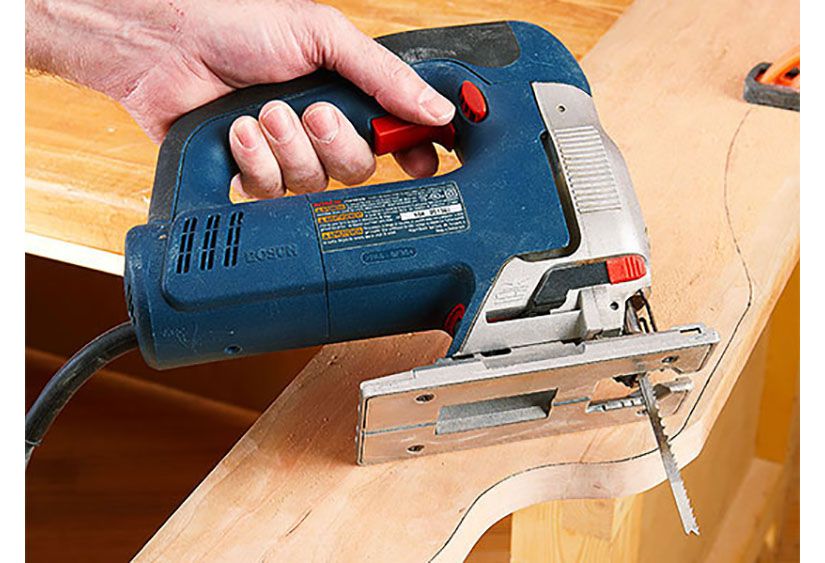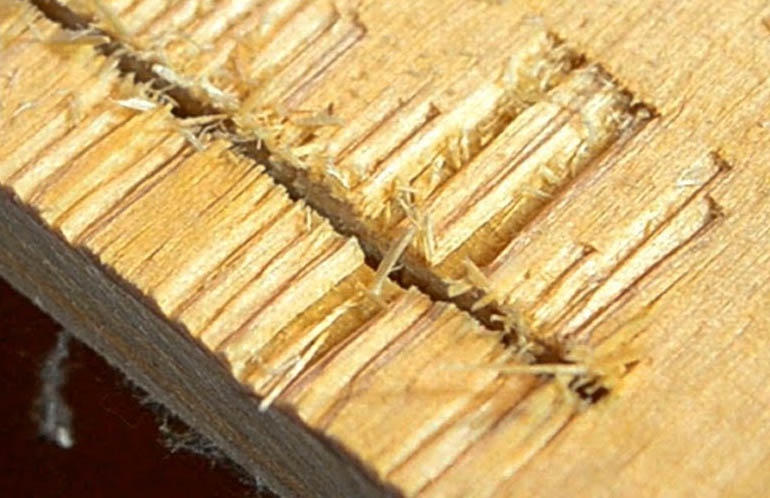Can you use a jig saw to cut plywood? If you’ve ever wondered about this, you’ve come to the right place! We’re here to explore the exciting world of woodworking and find out if a jig saw is the right tool for the job.
Whether you’re a budding DIY enthusiast or just curious about woodworking techniques, understanding the tools at your disposal is key. So, let’s dive in and discover if a jig saw is up to the task of cutting plywood.
Get ready for some woodworking fun as we uncover the capabilities and limitations of using a jig saw for plywood cuts. Let’s grab our safety goggles and unleash our creativity!
Wondering if a jig saw is suitable for cutting plywood? Absolutely! While it may not be the ideal tool, a jig saw can still be used to cut plywood effectively. Just keep in mind a few important tips. First, choose the right blade for plywood. Then, secure the plywood properly and proceed with slow, steady cuts. Remember to let the tool do the work and avoid forcing it. With the right technique, your jig saw can be a handy tool for cutting plywood!

Can You Use a Jigsaw to Cut Plywood?: Everything You Need to Know
Introduction: Plywood is a versatile material commonly used in various woodworking projects. If you’re working on a project that requires cutting plywood, you may wonder if a jigsaw is a suitable tool for the job. In this article, we will explore the capabilities of a jigsaw and provide you with the information you need to determine whether or not you can use a jigsaw to cut plywood effectively.
Can a Jigsaw Cut Plywood?
Using a jigsaw to cut plywood is absolutely possible and can be an excellent choice for certain projects. Since plywood is a thinner and more flexible material compared to solid wood, a jigsaw’s ability to make intricate curved cuts makes it a valuable tool. However, there are a few factors to consider before using a jigsaw for cutting plywood.
Factors to Consider
1. Blade Selection: Choosing the right blade for cutting plywood is crucial. Opt for a fine-toothed blade with a high TPI (teeth per inch) count. This type of blade will provide smoother and cleaner cuts. Additionally, ensure the blade is sharp and in good condition to prevent tearing or splintering the plywood.
2. Cutting Speed: When using a jigsaw to cut plywood, it’s essential to maintain a consistent and controlled cutting speed. Avoid rushing or applying excessive pressure, as this can lead to rough cuts or damage to the plywood. Take your time and let the jigsaw do the work.
3. Plywood Thickness: While a jigsaw can cut plywood of various thicknesses, it is important to understand the limitations of the tool. Thicker plywood may require multiple passes to achieve clean cuts. Experiment with different settings and techniques to find what works best for your specific project.
Benefits of Using a Jigsaw for Cutting Plywood
1. Versatility: A jigsaw’s ability to make curved cuts makes it a versatile tool for working with plywood. Whether you need to create intricate designs or cut out precise shapes, a jigsaw can easily navigate plywood’s curves and contours.
2. Accessibility: Jigsaws are widely available and relatively affordable. This makes them accessible to both professionals and DIY enthusiasts, allowing anyone to tackle plywood cutting projects without breaking the bank.
3. Maneuverability: The compact size and maneuverability of a jigsaw make it an ideal tool for cutting plywood. Its lightweight nature allows for greater control and precision, enabling you to achieve accurate cuts in tight spaces or awkward angles.
Tips for Using a Jigsaw to Cut Plywood
While a jigsaw can successfully cut plywood, following these tips can ensure optimal results:
Select the Right Blade
Choose a fine-toothed blade with a high TPI count. This will minimize tear-out and produce clean cuts. Additionally, ensure the blade is properly installed and tightened.
Mark Your Cut Line
Before cutting, mark the desired cut line on the plywood’s surface. This will serve as a guide, ensuring accuracy and preventing mistakes.
Use a Zero-Clearance Insert
A zero-clearance insert can help reduce tear-out when cutting plywood. This insert provides support to minimize the gap between the jigsaw’s base plate and the material, resulting in cleaner cuts.
Secure the Plywood
Stabilize the plywood by clamping it to a workbench or using a sawhorse. This will prevent any unnecessary movement and ensure an even and controlled cutting process.
Go Slow and Steady
Maintain a consistent cutting speed and avoid rushing through the process. Applying too much pressure or moving too quickly can lead to rough cuts and damage to the plywood.
Conclusion
In summary, a jigsaw can be a valuable tool for cutting plywood, thanks to its versatility and maneuverability. However, it’s essential to consider factors such as blade selection, cutting speed, and plywood thickness to achieve clean and precise cuts. By following the mentioned tips, you can confidently use a jigsaw to cut plywood for various woodworking projects.
Key Takeaways
- Yes, you can use a jigsaw to cut plywood.
- A jigsaw is a versatile tool that can make curved cuts and intricate designs in plywood.
- Choose the right blade for cutting plywood to ensure smooth and clean cuts.
- Make sure to use clamps or a workbench to secure the plywood before cutting.
- Take your time and move the jigsaw slowly to avoid splintering or damaging the plywood.
Frequently Asked Questions
Are you wondering if it’s possible to use a jig saw to cut plywood? Check out these frequently asked questions to find the answers you need!
Q1: Can a jig saw be used to cut plywood?
Yes, a jig saw can definitely be used to cut plywood. It is a versatile tool that can handle various materials, including plywood. Jig saws have a small, narrow blade that moves up and down quickly, allowing for precision cuts, even on curved or intricate designs.
When cutting plywood with a jig saw, it’s important to choose the right blade with a sufficient tooth count for clean cuts. A blade with fewer teeth per inch is suitable for rough cuts, while one with more teeth will provide smoother finishes. It’s also crucial to ensure the plywood is properly supported to prevent splintering.
Q2: What are the advantages of using a jig saw for cutting plywood?
Using a jig saw for cutting plywood offers several advantages. First, unlike other power saws, jig saws allow for intricate and curved cuts, making them ideal for detailed projects or custom designs. Additionally, due to their smaller size, jig saws are often more maneuverable and easier to control.
Furthermore, jig saws are generally more affordable than larger power saws, making them a great option for DIY enthusiasts or those on a budget. They are also versatile tools that can handle various materials, making them useful beyond just cutting plywood.
Q3: Can I achieve straight cuts with a jig saw on plywood?
While a jig saw is primarily known for its ability to make curved cuts, it is indeed possible to achieve relatively straight cuts on plywood. However, it requires some skill and technique. To ensure straighter cuts, use a straight edge or a guide to help keep the saw on track.
It’s also important to select the appropriate blade for the job. A blade with more teeth per inch and a narrower profile can help in achieving cleaner, straighter cuts. Taking your time and maintaining a steady pace while cutting can make a significant difference as well.
Q4: What safety measures should I take when using a jig saw to cut plywood?
When using a jig saw to cut plywood, it’s crucial to prioritize safety. Always wear appropriate safety gear such as safety goggles to protect your eyes from debris. Additionally, consider wearing ear protection as jig saws can produce loud noise.
It’s also recommended to secure the plywood properly and use clamps or another method to prevent it from moving during the cutting process. Take breaks as needed, as prolonged use can cause fatigue and affect your control over the tool. Finally, always follow the manufacturer’s instructions and guidelines for safe operation of the jig saw.
Q5: Can a jig saw create smooth cuts on plywood?
A jig saw can create relatively smooth cuts on plywood, but the final result may not be as smooth as cuts made with other saws, such as a table saw or circular saw. However, with the right blade and proper technique, you can minimize splintering and achieve a satisfactory finish.
To achieve smoother cuts, opt for a fine-toothed blade with more teeth per inch. Slowing down your cutting speed and using a guide or straight edge can also contribute to achieving smoother cuts on plywood. Keep in mind that sanding the edges after cutting can further improve the smoothness of the cuts if needed.

How to use a Jigsaw – Basics
Summary
So, can you use a jig saw to cut plywood? The answer is yes! A jig saw can be a great tool for cutting plywood, as long as you have the right blade and take some precautions. Make sure to choose a fine-tooth blade and go slow and steady to avoid splintering. It’s also important to properly support the plywood and take breaks to prevent the blade from overheating. Remember to wear safety goggles and gloves for protection. With the right technique and safety measures, you can successfully use a jig saw to cut plywood for your DIY projects.
In conclusion, a jig saw can be an effective tool for cutting plywood if used correctly. Just remember to use the right blade, go slow and steady, and take safety precautions. Happy cutting!
